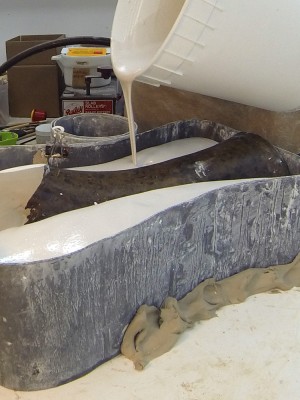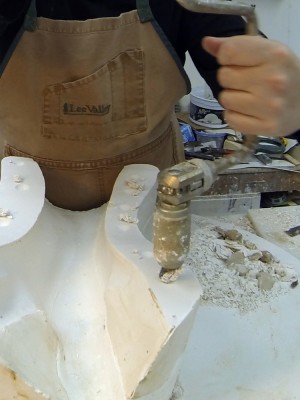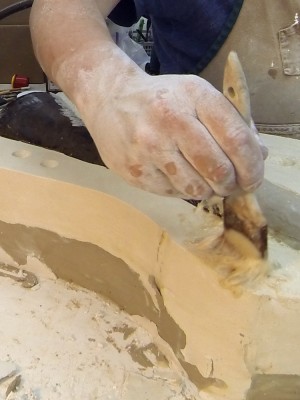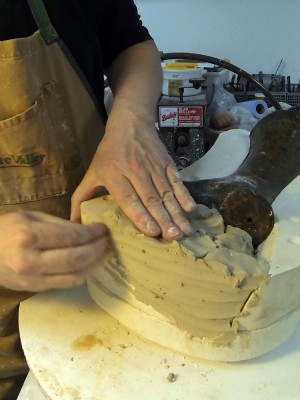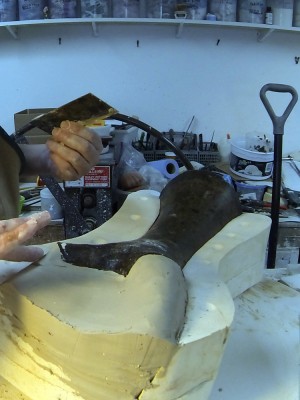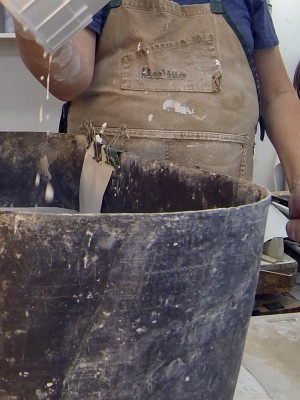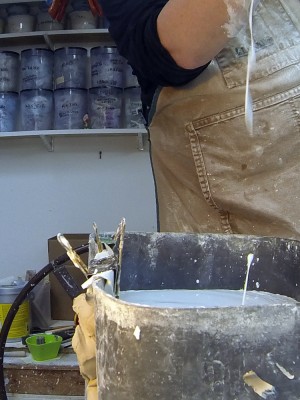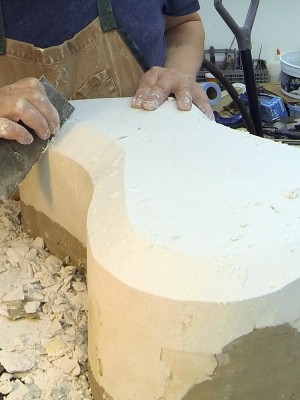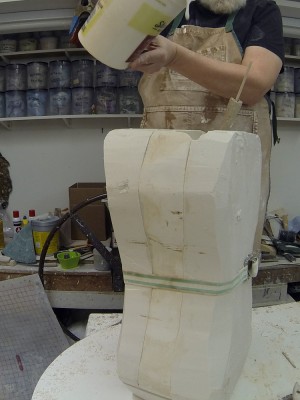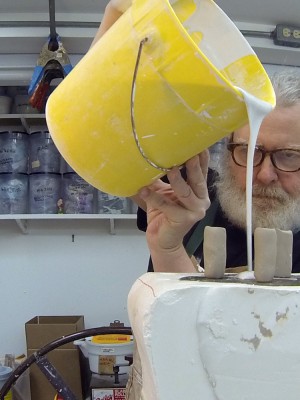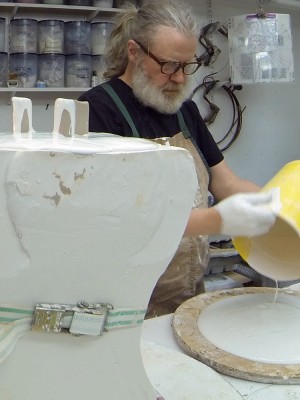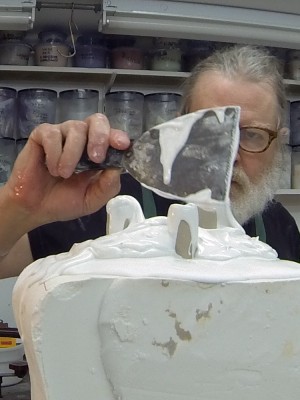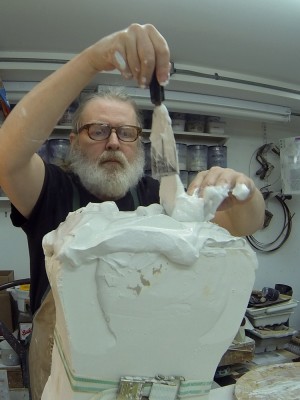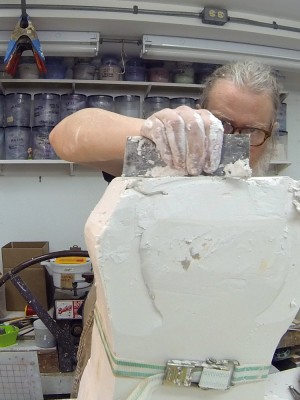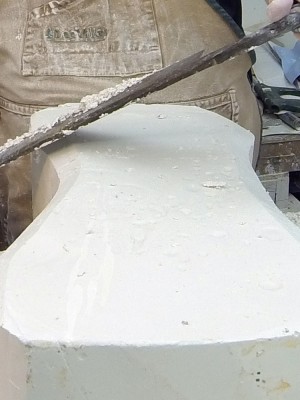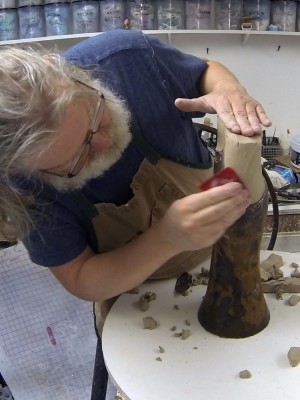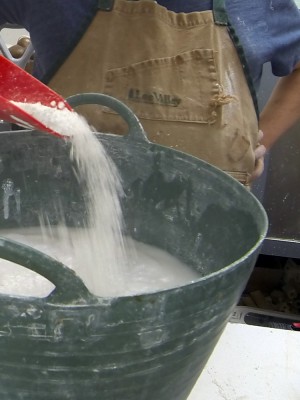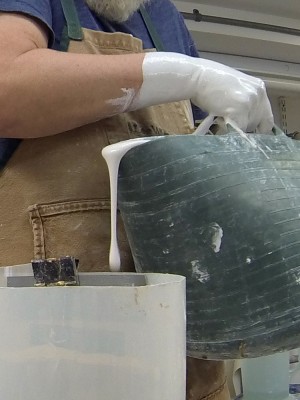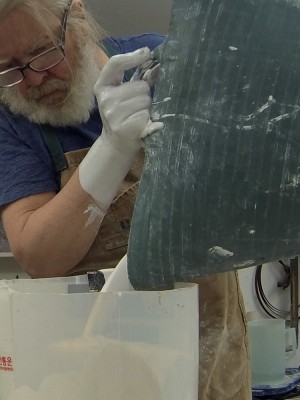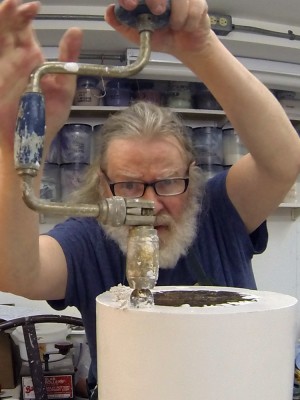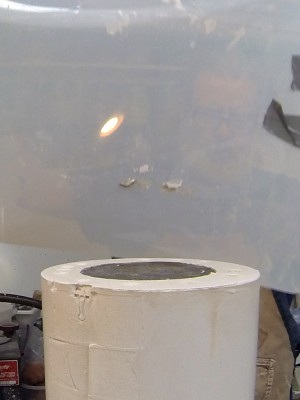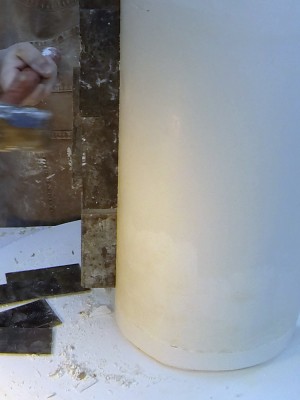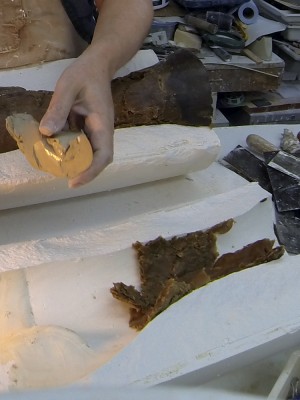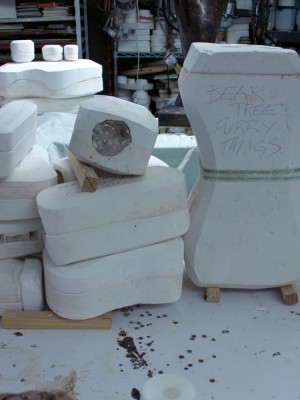I approached the moulds differently for each of the two trees this week.
Played it safe with the first. The model needed to come out intact. Using it again come Furry building. Took my time, spreading the task over a few days. The wax takes time to become firm again between plaster pours.
Chose to break up the sides of the mould into four sections. The clay build up was minimal. Just enough to anchor the wax model safely on its side without worrying much about where the seams would fall exactly. Having four pieces to go around gives a lot of leeway. Top insets and bottom sections completed the mould.
A faster but riskier method was chosen for the second tree. Once the interior area of the main branches was blocked out, the sides of the mould were formed by a single plaster pour. Top and bottom as in the first mould.
One centimetre or so deep channels were cut into the outer wall of the circular mould. Metal shims were hammered in, first one, then two, then one more in between all the way up each channel. If it goes well, you get nice tight seams. The opposing rough faces naturally key against each other.
Don’t underestimate how much the heat from the setting plaster changes the state of the wax model. If you need it again, then leave it overnight. See how the heated wax stuck to the different pieces when I parted this mould? Though it was more than an hour later, the wax was still the consistency of peanut butter. Not a problem as it happened. The area that was blocked out was still intact and that was all that mattered to complete the mould.
With the mould done, tree number two can now be recycled.
The second mould took about half as much time as the first. There can be rewards when risks are taken.
Both moulds are bigger and heavier than I can comfortably handle. Drainage holes have been cut into the bottoms of each. I don’t want to lift them up and turn them over when it’s time to empty the slip. There will be images of how these drains work in future posts.
The two main branches from the second tree, tree trunk number three and its main branches are next.

